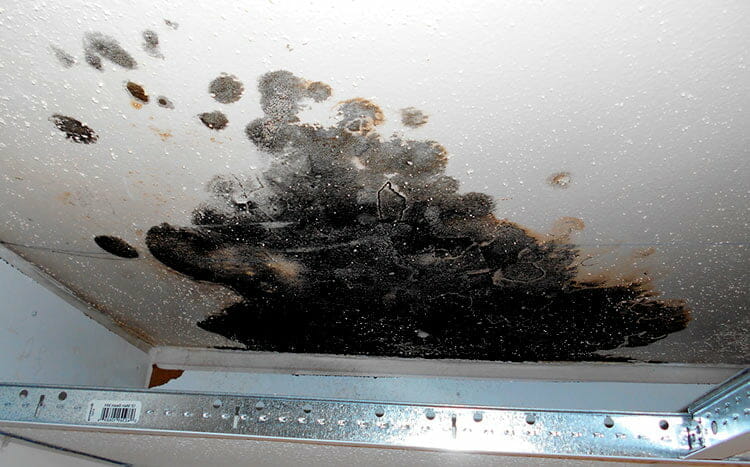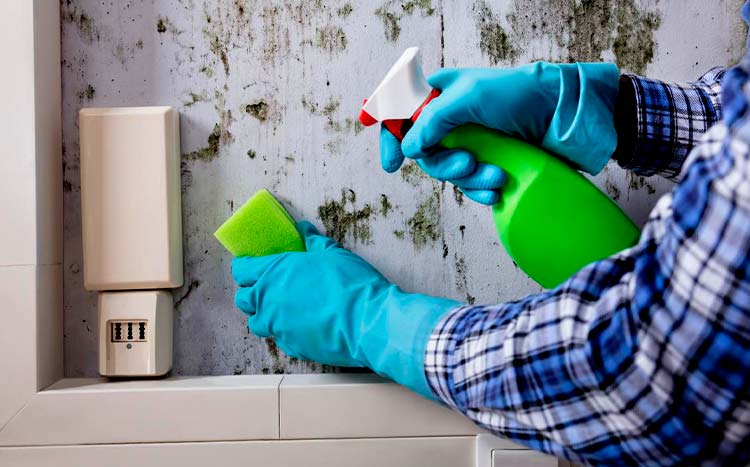For homeowners, it’s natural to want to steer clear of the issue of concealed mold. Stachybotrys Atra, commonly referred to as black mold, represents a frequent mold variety found in homes that poses a significant health risk to both humans and pets. Certain parts of the home, like basements, are particularly prone to the growth of mold. Keep reading to discover more about the challenges of mold in basements and how to effectively tackle them.
Basement mold is the most common type of mold due to the conditions in most basements. If your basement is rarely used, has low light, poor insulation, and is a bit humid even for short periods, then you probably will have to deal with basement mold. These conditions are perfect for basement mold growth.
What Does Basement Mold Look Like?
Black mold, the most common type of basement mold has hair-like spores when fully matured or dark green strings. These spores usually break off easily at the slightest touch or disturbance and become invisible dust that gets into air circulation. It is this “mold dust” that causes problems for people and pets when inhaled even for short periods.
There are other types of molds commonly found in basements such as a Cladosporium which has olive-green chain-like colonies and is usually found on wood, rotten food, and textiles. Another common and dangerous basement mold is aspergillus which usually has thin stems and ball-like spores taking the shape of a flask. Aspergillus likes to grow on surfaces with a high concentration of salt and sugar. Other types of basement mold include Alternaria, Acremonium, and Penicillium.
Nearly all basement molds cause damage to the surface they have grown on if left to spread and mature. You can, for instance, tell that there is Aspergillus mold in basement drywall by the yellow stains it creates. Wiping it off (not recommended) will reveal damaged peeling paint.
Expert mold inspectors can also help identify different types of mold, their origin, and toxicity levels. Note that some basement molds are colorless and tiny- less than an inch thick- and therefore impossible to see with the naked eye.

What Does Basement Mold Smell Like?
The most common type of basement mold has an earthy, rotting odor or pungent cough-inducing smell. However different molds have different smells and it can be difficult to correctly identify the type based on its smell alone.
Types of Mold Found in The Basement?
Stachybotrys (black mold) is the most common type of mold found in basements because it thrives in dark, humid, and poorly ventilated environments. It’s hard to see or detect black mold without sufficient light when it is young. However, mature black mold forms thick stains on basement walls, window seals, and other surfaces. Other types of mold you are likely to find in your basement include:
- Acremonium – A very dangerous and quick-spreading outdoor and indoor mold.
- Penicillium – A toxic type of mold with a heavy musty smell that causes immediate symptoms in humans and pets.
- Alternaria – A common indoor and outdoor mold that mostly feeds on organic matter such as dead indoor plants and wet decaying leaves.
- Aspergillus – You will likely find this mold in basements used to store food or other organic items such as flowers etc.
- Cladosporium – Mostly found on textiles such as curtains, carpets, rags, disused couches, and old clothes. Cladosporium is not considered poisonous but it does cause damage to these items and also has a bad smell.
Most indoor mold can be found in the basement but some are more commonly found in dark environments than others.
Some outdoor molds may also find their way into dark, poorly ventilated basements especially if there are gaps or some kind of opening to the outdoors.
There are probably hundreds of both toxic and non-toxic basement mold types out there. Some are more common in regions with cold, wet climates while others are found in tropical climates.
Identifying the type of mold and having it removed safely is the best approach. Follow the steps below to find a top-rated mold inspector to visit and take a look and advise. It is free to use this tool.
- Scroll to the top of the page and enter your Zipcode
- Answer questions about what you want to be done
- The information you enter will be forwarded to three local mold experts. They will send you a price estimate for the job and some friendly advice
IMPORTANT: There is no obligation to hire. This is a free tool and service to be used at your pleasure.
On Which Material in The Basement Mold Is Mostly Growing?
Basement mold is most likely to be found on surfaces such as drywall, carpets, curtains, furniture, window frames, HVACS, pipes, and drains, wood items such as stored wooden furniture, dead indoor plants, and pots, unused fabrics, old clothes, etc.
The type of mold you find on a surface depends on what it feeds on or the condition of the surface. For instance, black mold tends to grow on wet drywall or furniture. Some basement molds might be invisible, odorless, or hidden behind drywall and inside fabric.
How It Affects Materials and Surfaces
Drywall
Mold can affect drywall in different ways but the most common types of damage are paint discoloration or staining and peeling especially after it has been removed. More aggressive and mature basement mold spreads quickly and can destroy the entire basement paintwork. The worst type of damage is when the toxic gets inside drywall and destroys wood studs, insulation, and other installations.
Wood
Wood is food for basement mold because it is organic and contains a lot of cellulose. Basement devours wood over a long period and makes it virtually unusable due to rotting. Wet wood is destroyed faster and more extensively than dry painted wood. Eliminating moisture early might save the wood from basement mold.
Fabrics
Mold eats into fabric loosening the thread and structure leading to rotting, tearing, and softening after a long period. Fabric that has had basement mold for over a year is unusable and should be treated and disposed of.
Carpeting
Depending on the carpeting material, basement mold will either discolor and stain it or destroy it completely.
HVAC
Mold in HVAC systems is bad news as it can spread through the vents and poison the entire house with toxic dust-like spores. It can also cause clogging in the vents, compressors, and other installations causing damage to the HVAC.
Pipes, Drains
Basement mold can eat into pipes causing cracks and more leakages or grow large colonies that cause clogging and blockages.
Basement Insulation Techniques
Proper insulation can keep moisture and other mold-inviting substances at bay thus keeping your basement mold-free. Pay attention to window frames, gaps in walls, doors, and other openings when installing basements. Using high-quality synthetic insulation materials and modern insulation techniques is recommended if you want to keep basements mold-free.
Some of the insulation materials recommended for basement insulation include:
- Using modern SPUF (spray polyurethane foam) for insulation
- EPS (Expanded polystyrene) or XPS (Extruded polystyrene)
Make sure there are at least two inches of insulation between drywall and concrete to keep mold away. Also, repair any cracks or holes that might leak water into the basement before insulating it. Lastly, ensure that your basement is properly ventilated and heated in cold humid seasons.
Health Concerns with Basement Mold
Basement mold has been associated with many minor and serious respiratory illnesses in human beings and pets. Short-term symptoms and health risks caused by common basement mold include allergic reactions, uncontrolled sneezing/coughing, and headaches.
More serious health risks linked to long-term exposure to toxic basement include lung infections, difficulty breathing, and worsening of existing respiratory illnesses such as cancer, asthma, tuberculosis, among others.
Can Mold in The Basement Affect Upstairs?
Mold in the basement can spread to upstairs rooms through the ventilation system, open doors, and drainage pipes. Aggressive molds such as black mold usually spread fast and do not need much moisture or organic matter to grow new colonies. Preventing or removing existing mold in the basement is important to stop it from affecting other rooms.
FAQ's
How Long Does It Take to Detox from Mold?
Mold removal or remediation usually takes between a day to a week depending on the type of mold and how far it has spread. Hiring a professional mold service will make the detoxification process faster and more effective as they have access to better equipment and mold killers.
Is the Mold in My Basement Dangerous?
Mold in your basement is quite dangerous because of the many health risks associated with it. The mold can also spread to other rooms upstairs and establish new colonies.
Will Mold Die If It Dries Out?
Mold does not die when it dries out, it goes into a dormancy state and will spring back to life and continue producing new spores when humidity increases.
What Are the Symptoms of Long-Term Mold Exposure?
Long-term mold exposure can cause several mild to serious health conditions such as lung diseases, problems with memory, insomnia and impaired immune systems. People with underlying conditions like asthma are more at risk of developing more serious symptoms like breathing difficulties.








